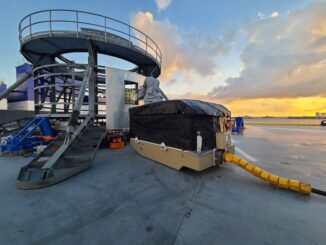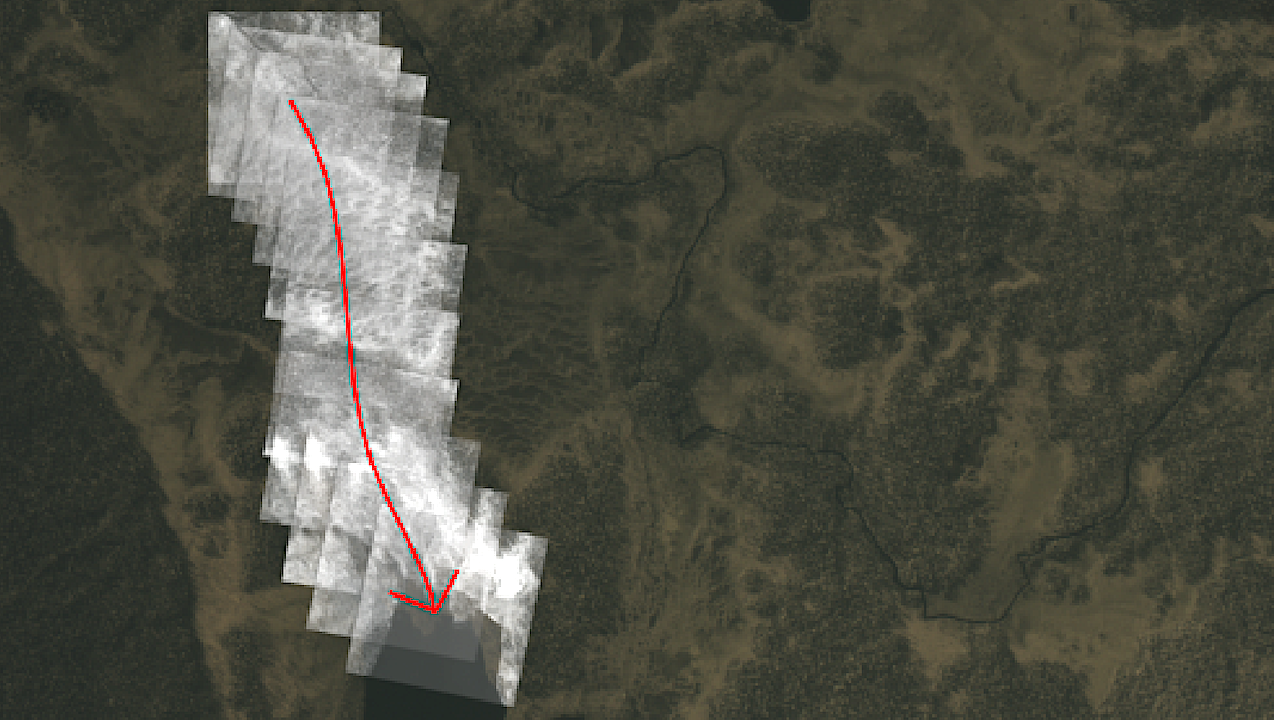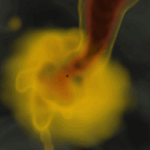Now Reading: NASA’s Chandra Reveals Star’s Inner Conflict Before Explosion
-
01
NASA’s Chandra Reveals Star’s Inner Conflict Before Explosion
NASA’s Chandra Reveals Star’s Inner Conflict Before Explosion


The inside of a star turned on itself before it spectacularly exploded, according to a new study from NASA’s Chandra X-ray Observatory. Today, this shattered star, known as the Cassiopeia A supernova remnant, is one of the best-known, well-studied objects in the sky.
Over three hundred years ago, however, it was a giant star on the brink of self-destruction. The new Chandra study reveals that just hours before it exploded, the star’s interior violently rearranged itself. This last-minute shuffling of its stellar belly has profound implications for understanding how massive stars explode and how their remains behave afterwards.
Cassiopeia A (Cas A for short) was one of the first objects the telescope looked at after its launch in 1999, and astronomers have repeatedly returned to observe it.
“It seems like each time we closely look at Chandra data of Cas A, we learn something new and exciting,” said Toshiki Sato of Meiji University in Japan who led the study. “Now we’ve taken that invaluable X-ray data, combined it with powerful computer models, and found something extraordinary.”
As massive stars age, increasingly heavy elements form in their interiors by nuclear reactions, creating onion-like layers of different elements. Their outer layer is mostly made of hydrogen, followed by layers of helium, carbon and progressively heavier elements – extending all the way down to the center of the star.
Once iron starts forming in the core of the star, the game changes. As soon as the iron core grows beyond a certain mass (about 1.4 times the mass of the Sun), it can no longer support its own weight and collapses. The outer part of the star falls onto the collapsing core, and rebounds as a core-collapse supernova.
The new research with Chandra data reveals a change that happened deep within the star at the very last moments of its life. After more than a million years, Cas A underwent major changes in its final hours before exploding.
“Our research shows that just before the star in Cas A collapsed, part of an inner layer with large amounts of silicon traveled outwards and broke into a neighboring layer with lots of neon,” said co-author Kai Matsunaga of Kyoto University in Japan. “This is a violent event where the barrier between these two layers disappears.”
This upheaval not only caused material rich in silicon to travel outwards; it also forced material rich in neon to travel inwards. The team found clear traces of these outward silicon flows and inward neon flows in the remains of Cas A’s supernova remnant. Small regions rich in silicon but poor in neon are located near regions rich in neon and poor in silicon.
The survival of these regions not only provides critical evidence for the star’s upheaval, but also shows that complete mixing of the silicon and neon with other elements did not occur immediately before or after the explosion. This lack of mixing is predicted by detailed computer models of massive stars near the ends of their lives.
There are several significant implications for this inner turmoil inside of the doomed star. First, it may directly explain the lopsided rather than symmetrical shape of the Cas A remnant in three dimensions. Second, a lopsided explosion and debris field may have given a powerful kick to the remaining core of the star, now a neutron star, explaining the high observed speed of this object.
Finally, the strong turbulent flows created by the star’s internal changes may have promoted the development of the supernova blast wave, facilitating the star’s explosion.
“Perhaps the most important effect of this change in the star’s structure is that it may have helped trigger the explosion itself,” said co-author Hiroyuki Uchida, also of Kyoto University. “Such final internal activity of a star may change its fate—whether it will shine as a supernova or not.”
These results have been published in the latest issue of The Astrophysical Journal and are available online.
To learn more about Chandra, visit:
https://science.nasa.gov/chandra
Learn more about the Chandra X-ray Observatory and its mission here:
Visual Description
This release features a composite image of Cassiopeia A, a donut-shaped supernova remnant located about 11,000 light-years from Earth. Included in the image is an inset closeup, which highlights a region with relative abundances of silicon and neon.
Over three hundred years ago, Cassiopeia A, or Cas A, was a star on the brink of self-destruction. In composition it resembled an onion with layers rich in different elements such as hydrogen, helium, carbon, silicon, sulfur, calcium, and neon, wrapped around an iron core. When that iron core grew beyond a certain mass, the star could no longer support its own weight. The outer layers fell into the collapsing core, then rebounded as a supernova. This explosion created the donut-like shape shown in the composite image. The shape is somewhat irregular, with the thinner quadrant of the donut to the upper left of the off-center hole.
In the body of the donut, the remains of the star’s elements create a mottled cloud of colors, marbled with red and blue veins. Here, sulfur is represented by yellow, calcium by green, and iron by purple. The red veins are silicon, and the blue veins, which also line the outer edge of the donut-shape, are the highest energy X-rays detected by Chandra and show the explosion’s blast wave.
The inset uses a different color code and highlights a colorful, mottled region at the thinner, upper left quadrant of Cas A. Here, rich pockets of silicon and neon are identified in the red and blue veins, respectively. New evidence from Chandra indicates that in the hours before the star’s collapse, part of a silicon-rich layer traveled outwards, and broke into a neighboring neon-rich layer. This violent breakdown of layers created strong turbulent flows and may have promoted the development of the supernova’s blast wave, facilitating the star’s explosion. Additionally, upheaval in the interior of the star may have produced a lopsided explosion, resulting in the irregular shape, with an off-center hole (and a thinner bite of donut!) at our upper left.
News Media Contact
Megan Watzke
Chandra X-ray Center
Cambridge, Mass.
617-496-7998
mwatzke@cfa.harvard.edu
Corinne Beckinger
Marshall Space Flight Center, Huntsville, Alabama
256-544-0034
corinne.m.beckinger@nasa.gov
Share
Details
Related Terms
Stay Informed With the Latest & Most Important News
-
 012024 in Review: Highlights from NASA in Silicon Valley
012024 in Review: Highlights from NASA in Silicon Valley -
 02Panasonic Leica Summilux DG 15mm f/1.7 ASPH review
02Panasonic Leica Summilux DG 15mm f/1.7 ASPH review -
 03How New NASA, India Earth Satellite NISAR Will See Earth
03How New NASA, India Earth Satellite NISAR Will See Earth -
 04And Thus Begins A New Year For Life On Earth
04And Thus Begins A New Year For Life On Earth -
 05Astronomy Activation Ambassadors: A New Era
05Astronomy Activation Ambassadors: A New Era -
06SpaceX launch surge helps set new global launch record in 2024
-
 07Space Force plans new ‘Futures Command’ amid pressure to speed up modernization
07Space Force plans new ‘Futures Command’ amid pressure to speed up modernization























